|
Synopsis for Dr. Dilip Venugopal’s colloquium talk, “Spatial heterogeneity of stink bug (Hemiptera: Pentatomidae) populations in agricultural systems” This week’s colloquium again focused on the brown marmorated stink bug (BMSB). While BMSB is best known for terrorizing area residents in their homes, BMSB also feeds on a wide range of plants and is a major agricultural pest of field crops, fruit, vegetables, and ornamentals. In the exciting conclusion to this semester’s colloquium series, Dr. Dilip Venugopal presented his findings from extensive research on the BMSB in mid-Atlantic field crops. Dr. Venugopal’s work focused on understanding the spatial patterns of stink bug population dynamics. He conducted extensive field surveys to examine these patterns at various spatial scales, which included localized portions of agriculture plots, whole crop fields and the mid-Atlantic region. Dr. Venugopal’s research illustrates the roles of landscape and environment in facilitating the outbreak and spread of stink bugs. In his initial study, Dr. Venugopal analyzed stink bug density and crop damage along the edges of corn and soy fields. Dramatically, his team found a majority of stink bugs in these fields were BMSB (97% and 93% on corn and soybean plants, respectively). BMSB densities were also higher adjacent to woods compared to open areas. This difference was likely because BMSB moved into crops from tree hosts in the woods and, upon settling in the crops, laid their eggs in the field edge. The small nymphs do not travel far after hatching. Additionally, Asian trees found in adjacent woods, such asAilanthus and Paulownia, were common hosts for the BMSB, an Asian native. Regarding crop damage, both corn and soy experienced a loss in quality while only soy had lesser yields as a result of feeding. Following the edge survey, the next focus studied the spatiotemporal distributions of stink bug distribution in a field. Dr. Venugopal hypothesized that as corn matures, stink bugs would migrate to soy fields. He found that there was a stage structure difference between the two crops. While small nymphs were primarily found on corn, large nymphs and adults were found on the soy plants. Data also revealed BMSB preferred plants with fruiting bodies (ears of corn or soy bean pods) over those without, particularly the milk and dough stages in corn and pod filling stages in soybean. The movement of large nymphs and adults to the soy is likely due to the nutritional quality of the plants. Bugs favor higher sugar and nitrogen content and BMSB migrated from corn into soy when it was most nutritious. The final aim of his research was to gain an understanding of the spatial heterogeneity across a larger regional scale. Collaborating with researchers from Virginia Tech and University of Delaware, Dr. Venugopal compiled data from 208 soybean fields across 4 states (Delaware, Maryland, Virginia, and West Virginia). He analyzed 45 temperatures, environmental, and land use variables to determine what was driving patterns in stink bug abundance across the region. The methods used for analyzing the spatial patterns can be found here. Results showed that the influence of adjacent habitat was limited to within fields, and that temperature and urbanized regions were the primary factors structuring BMSB abundance patterns across mid-Atlantic region. The main difference between BMSB and other native stink bugs was its association with urban zones, while the native species were associated with forested areas. Based on his findings, Dr. Venugopal concluded the placement and arrangement of crops are important to reducing stink bug outbreaks. Dr. Venugopal recommends the avoidance of shared boundaries of corn and soybeans. Planting times should be considered with an aim to break the synchrony of crop stages. Finally, the high density of stink bugs along field edges makes insecticide treatment of entire fields unnecessary. Instead, insecticide applications could be reduced by limiting treatment to edges only, particularly those bordering woods. Once considered a secondary agriculture pest, stink bugs have gained increased attention due to the recent introduction of the brown marmorated stink bug. The economic importance of this pest cannot be understated. Last year this bug caused an estimated $73 million in damage to soybean crops across 11 states. Dr. Venugopal research is as a much needed driver advocating necessary changes in crop and pest management practices. About Kevin:
Kevin Ulrich is a PhD candidate in the Thorne Lab. His current research involves host-pathogen relationships and how natural controls can best be utilized in urban environments using Cimex lectularius, the common bed bug, as a model organism. This research is aimed at reducing chemical pesticide reliance in favor of greener and safer alternatives. About Erik: Erik Bergmann is a third year masters student in Michael Raupp’s lab conducting research on patterns of host use by BMSB in woody ornamental plant species. He is graduating in August and will be joining Bartlett Tree Experts in June. About Becca: Becca Wilson is a first year masters student in Bill Lamp’s lab. She is currently studying the distribution patterns of nuisanceblack flies in Washington County, Maryland. The brown marmorated stink bug (BMSB) has been the bane of both farmers and homeowners for the past decade. These invasive pests, native to eastern Asia, have an incredibly broad host range that encompasses a wide array of food crops and ornamentals. Much work has been done on the damage BMSB can do in vegetable and field crop systems by faculty members Galen Dively and Cerruti Hooks. Speaker Erik Bergmann's work has instead focused on ornamental systems, worth an estimated $2 billion annually in Maryland alone. By looking at host use by BMSB, Erik hopes to find a way to essentially 'design' these insects out of landscapes. Representing two years of research, the data set that Erik has assembled is truly colossal. Over 5,000 individial plants were surveyed nearly 54,000 times with 34,000 insects counted overall. While looking at host plant use is nothing new, Erik's study is the first of its kind to look at BMSB host use at the cultivar level, information which is significantly more useful to growers than broad generalizations about plant species or genera. Cultivars can be thought of as breeds or varieties of a plant species that differ from one another in a number of ways, such as appearance or hardiness. By learning which cultivars are more susceptible to stink bug attack, growers can plant the species or genus they desire and minimize BMSB damage. While very polyphagous, BMSB does show some host preference. By looking at the use of different plant cultivars by different life stages of BMSB, Erik was able to determine which plants were preferred by BMSB. Several striking trends became apparent. First, BMSB vastly preferred angiosperms to gymnosperms. Second, they generally preferred non-Asian hosts to Asian hosts. However, this sometimes differed from genus to genus. For example, BMSB preferred Asian over non-Asian cedars but preferred non-Asian over Asian pine cultivars. Two hypotheses seek to explain this preference for Asian or non-Asian plant cultivars. The first, known as the enemy release hypothesis, posits that insects will eat plants that are familiar to them and exist in their native range. An alternative hypothesis (and one that Erik believes more likely in the case of BMSB) is known as defense free space, which suggests that insects will take advantage of plants that cannot defend themselves from attack. Armed with the knowledge gained from this research, hopefully greater effort can be made to employ cultural control practices to design the brown marmorated stink bug out of our farms and out of our landscapes. About Thomas:
Thomas Pike is a second year masters student in Paula Shrewsbury's lab conducting research on ornamental IPM. His primary research focus is on the effects of entomopathogenic fungi on the brown marmorated stink bug and their potential as a biological control. Lijuan Du is a senior PhD. student in the Department of Entomology at the University of Maryland in College Park, MD. Having completed her bachelor’s degree in bioengineering at the prestigious Shanghai Jiaotong University in China, she began her graduate work in 2009 under the supervision of Dr. Jian Wang, whose lab specializes in using Drosophila as a model organism in the field of genetics. The fruit fly, Drosophila melanogaster, has been a model organism for over one hundred years to study genetics and developmental biology. Countless researchers work with it, and an impressively large amount of data has been accumulated thanks this work. It has been a successful model organism for many reasons. It is small, has a simple and easily produced diet, and has a short life cycle which allows many generations to be produced in a short period of time. There are mutants available for a large number of genes, and new mutations can be induced very easily. It also has a small, compact genome of only 165 million base pairs in length, containing about 14,000 genes. One of the most interesting things about D. melanogaster is that it has orthologs to about 62% of human disease genes allowing it to serve as model for the study of many biomedical processes. Neuronal morphogenesis is studied by working with D. melanogaster’s mushroom bodies (centers similar to the hippocampus in the human brain), centers for olfactory mediated learning and memory. Within the mushroom bodies there are 3 major classes of intrinsic neurons (γ, α’/β’, and α/β neurons) distinguished by morphological characteristics as well as by birth order during development (Crittenden et al., 1998). By performing a forward genetic screen, Lijuan found that the loss of JAK/STAT signaling receptor dome function in the neurons causes a gamma- only phenotype in adult fly mushroom bodies, and Lijuan further confirmed that the loss of JAK/STAT pathway (important for growth and development) signaling was the cause of the gamma-only phenotype. She showed that the loss of dome does not affect the morphology, remodeling or survival of gamma-neurons in the mushroom bodies. She also showed that JAK/STAT signaling promotes cell division and prevents premature termination of the mushroom body neuroblasts. In order to identify potential downstream targets of the JAK/STAT pathway, a reverse genetic screening was done to see which genes were able to rescue mutants which lacked the proper expression of dome. A total of 3 genes were identified from this screen, namely diap, yorkie and cycE. To provide further evidence for cycE as a putative downstream target, Lijuan carried out a transgenic injection, the inserted DNA having a STAT-binding site within the isolated cycE gene. The transgenic analysis confirmed that the proposed binding site within the cycE gene was indeed a STAT binding site. JAK/STAT signaling directly regulate cycE transcription in wing discs and in mushroom bodies. After this part of the experiment the function of a gene called yorkie in mushroom bodies was investigated. In together, Lijuan showed that loss of JAK/STAT and Hippo pathway downstream effector Yorkie cause similar cell proliferation defects, and higher activation of one can compensate for lack of the other. Eventually it was determined that Stat92E and Yorkie converge to regulatecycE gene expression via different cis-regulatory element. Chris Taylor is a PhD student with focal areas in IPM and insect-microbe symbioses. He studies the brown marmorated stink bug (BMSB), and the focus of his research is on understanding the relationship between BMSB and its gut symbionts to determine whether exploiting this relationship is feasible in management programs.
Justin Rosenthal received his undergraduate degree from the University of Maryland-College Park in 2011 in the Biological Sciences, with a concentration in neurobiology/physiology. Upon beginning his PhD. Program here, Justin began investigating the role of a particular gene, darkener of apricot(Doa), in promoting neuron survival through the pupal stage of insect life, i.e. metamorphosis. Building upon previous research, it became ever more convincing that without this gene certain neurons within a Drosophila’s brain will not survive until adulthood. Currently he is working out the purpose of specific exons and isoforms of this gene, as several variations exist. Further research will likely include expansion of this investigation into other non-nervous tissue. Overall this information will provide a molecular model for how cell death, especially in neurons, proceeds. Symbionts as modulators of honey bee health: lactic acid bacteria and foulbroods. In last week’s colloquia, Dr. Forsgren proposed a possible “missing link” to the problematic widespread honeybee collapse. There are many factors contributing to the decline of honeybee health worldwide and no individual factor stands alone. However, Dr. Forsgren brings us an insight into how our modern agricultural practices may be hindering the internal flora of honeybees. Most bees also form a "superorganism." Much the same way that individual cells combine their simple tasks into a complex organism, bees work individually to perform simple tasks but together form a complex colony that can profoundly impact its surrounding habitat. Honeybees will pollinate large areas of land and as a result have a large impact on our food supply. The honeybee-human mutualistic relationship has been around for a long time. Humans have been cultivating bees since about 8000-2000 BC, a practice that has been important to agricultural, economic, and cultural practices and produces honey, one of the most energy-rich foods that nature produces. Honeybees are responsible for over $220 billion USD in pollination services worldwide. They are considered to be third in food production value for European countries. Those who enjoy tree fruit such as apples, peaches and pears can thank honeybees for their produce. Dr. Forsgren’s research gives us a window into an important community of lactic acid bacteria (LAB), includingLactobacillus and Bifidobacterium, that is critical to bee health. Much like the probiotic bacteria you might find at your local supermarket, Dr. Frosgren shows us that honey bees also benefit from “probiotic bacteria”. Much like what is found within the human gut, these bacteria release beneficial byproducts that improve organism function. However, unlike human gut flora, these probiotic bacteria exist in a diverticulum of the bee's digestive tract called the “honey crop,” where honey and nectar are stored for transport. Byproducts of the bacterial biofilm, such as lactic acid, formic acid, and hydrogen peroxide, provide protection against invasive pathogens. Through examination of LAB, Dr. Forsgren determined a link between bee flora symbionts and reduction of American and European Foulbrood disease propagation. Dr. Forsgren explains that within the honey crop beneficial lactic acid bacteria exist in bee species worldwide. Unique to LAB is their immense diversity: recent discovery in bees alone have doubled in number of species identified globally from 50 to approximately 100. This close association and significant diversity suggest that the role these bacteria play in the colony have been vastly underestimated. Their presence and diversity suggest a symbiotic adaptive feature common among all bees and possibly integral to the preservation of individual and colony health. Dr. Forsgren points out that disease organisms that are transmitted from parent to offspring should have low virulence so as to maintain continuous transmission from queen to daughter. However, when disease transmission occurs rapidly from hive to hive, the selection pressure against virulence would be relaxed. She argues that many practices used in apiculture actually promote transmission between hives and thereby promote virulence in pathogens. Bees are particularly susceptible to diseases such as American and European foulbroods (differentiated by location of their discovery, not impact). Foulbroods are bacterial diseases that cause liquefaction or secondary infection of the larvae. The American Foulbrood disease, caused by Paenibacillus larvae, are very resilient and have existed in the environment for hundreds of years. Multiple genotypes of the bacteria exist, some that kill the larvae before the cell is capped, and others that kill the larvae after the cell is capped. Because the post-capped larvae show no signs of disease, they are often overlooked by worker bees during their maintenance and hygienic practices. Bacterial infection begins in the gut of the bee larvae, eventually penetrating the hemocoel and continuing to degrade the larval body within the comb cell. The remains of the infected larvae are characterized by a brown glue-like substance https://www.youtube.com/watch?v=v2Aa56jut7Y. Antibiotics are used in the US; however, the only legal control option available in Europe is a complete burn-down of the infected colony. The European Foulbrood disease, caused by Melistococcus plutonius has made a considerable comeback in the past decade with a 10-fold increase in diversity discovered thus far. These bacteria are unable to penetrate the hemocoel and larvae die of infection rather than complete deterioration. Typically not as fatal as the American Foulbreed disease, since this diversification, certain strains have conferred 100% fatality, suggesting a possible increase of virulence due to current agricultural and beekeeping management practices. In laboratory research the lactic acid bacteria (LAB) found in honey bees outcompete foulbrood strains on petri dishes. In some cases it actively inhibits the growth of foulbrood by slowing its growth. In bee larvae infected with foulbrood bacteria and treated with LAB, their ability to fight off the foulbrood infection increased. Research by Dr. Forsgren and her colleagues suggests that the increased use of antibiotics in beekeeping to fight off foul brood along with cultural practices such as feeding bees sugar water to reserve honey for human consumption may be harming the probiotic bacteria found in the honeybee digestive tract. These and many other factors may be causing the overall decline in honeybee health in recent years. The knowledge that we can “rescue” some aspect of honeybee health by feeding them lactic acid bacteria provides promising avenues for future treatment and management efforts for honeybee colonies. The discussion on the cost/benefit of antibiotic use in honeybee colonies may gain greater traction as more information emerges on the diverse microcosms found in the honeybee gut that make up their bodies defensive abilities. For for more information on the specific research described here:
Novel lactic acid bacteria inhibiting Paenibacillus larvae in honey bee larvae Symbionts as Major Modulators of Insect Health: Lactic Acid Bacteria and Honeybees Sources: Flickr Creative Commons Images Wikimedia- Creative Commons images Dams, L & M. 1977. Spanish rock art depicting honey gathering during the Mesolithic. Nature. 268:228 - 230. PloS One- Bacterial SEM from : Symbionts as Major Modulators of Insect Health: Lactic Acid Bacteria and Honeybees Armando Rosario-Lebron studies the interactions of cultural practices on agricultural land have on natural enemy populations and focuses on outreach education on arthropods. Lauren Hunt is conducting research focused on biological control of stink bugs, with emphasis on the usage of insectary plants to increase mortality of the invasive brown marmorated stink bug (BMSB). http://cerrutirrhookslab.umd.edu/people/index.html On March 7, 2014, Dr. David Hawthorne gave a seminar about ATP-binding cassette transporter (ABC transporters) and the potential roles they play in the evolution of Insecticide Resistance, particularly on multi-drug resistance in Colorado potato beetle (CPB) and colony collapse disorder (CCD) in Honey bees. ABC transporters are transmembrane proteins that use ATP in order to move substrates across a membrane. Those transporters are critical for the defense of sensitive tissues against drugs and poison, as they will pump those out of the cells. In the case of pest insects, this protection is unfortunate, as it can lead to resistance to an insecticide. A high portion of tolerance due to ABC transporters is most likely due to increases in the number of ABC transporters produced by a cell. Since ABC-transporters can pump a wide variety of substrate across the membrane it is believed to be a major contributor to multi-drug resistance, meaning the organism becomes simultaneously resistant to a wide array of chemicals. It is not even limited to insects! P-glycoprotein is a well-known ABC transporters that has been linked with multidrug resistance in cancer patients. In the case of insecticides, ABC transporters prevent the insecticide from reaching its target by pumping the toxin out of the cell in to the insect hemolymph. This keeps the cell toxicity low allowing for the insect’s enzymes to break down the remaining toxins. Once inside the insects’ hemolymph the toxins are then filtered out by the malpighian tubule, and stored in the hind gut before being excreted. Dr. Hawthorne illustrated multi-drug resistance using the CPB and insecticide trials done by Dr. Galen Dively. CPB are famous for “being resistant to everything”, but actually this varies across populations. In the trials, resistant and sustainable populations of CPB were exposed to a brand new type of insecticide (that neither population had experienced before), and their LD 50’s were compared. In all cases the eastern populations had a higher level of resistance, indicating a pattern that may be due to multidrug resistance that may have arisen from past exposure to another unrelated insecticide. To test the link with ABC transporters, Dr, Hawthorne described bioassays of the CPB testing sensitivity of this insect to imidacloprid in the presence or absence of an inhibitor of the transporters. If the transporters are inhibited, they cannot carry on their detoxification function. The bioassays confirmed the role of ABC transporters by showing that, in the presence of the inhibitor, resistant populations increased their sensitivity to levels similar to those of the susceptible populations. Dr. Hawthorne’s perspective of this mechanism shifted when he considered it in relation to the pollinator crisis and in particular CCD in honey bees. Beneficial insects are also exposed to insecticides, and rarely just one at a time. The mechanism of multi drug resistance and ABC transporter inhibition could provide cues as to whether combinations of toxins could be a threat to beneficial insects. Bioassays showed that the mortality resulting from exposure to coumaphos and fluvalinate (2 products used in the hives by the beekeepers trying to get rid of a parasite of the honey bees) increases in presence of a known inhibitor. Because of the generality of ABC transporters, a high number of chemicals can be processed as substrate but it is also probable that many chemicals can act as inhibitors as well. Identifying which chemicals can act as inhibitors of ABC transporter is critical to identify risky combinations of chemicals and improve the Honey Bee risk assessment. This rejoins an earlier entry in the UMD Entomology Colloquium series (Grace Kunkel) that described the use of a fluorescent dye shown to be a substrate of ABC transporter and with which potential inhibitors could be tested. About the Authors:
Emily Zobel is an MS student in Cerruti Hooks’ Lab. She is currently studying the feeding habits of the invasive brown marmorated stink bug on vegetable crops. Nathalie Steinhauer is a PhD student working in the vanEngelsdorp lab. She studies the risk factors associated with beekeeping management linked to increased honey bee colonies mortality. Dr. Paul Leisnham has spent much of his career studying invasive, medically important mosquitoes in the United States. He has a long-term interest in their population dynamics, competition between invaders and natives, spatial patterns of invasion, and the influence of climate change on all of these interactions. And with good reason, as Dr. Leisnham explained, mosquitoes are well-documented vectors for a number of different diseases, including West Nile Virus, which hit peak frequencies in the U.S. in 2003 and more recently in 2012. Dr. Leisnham went on to describe that many of the diseases vectored by mosquitoes have no vaccine, making the presence of adults a greater health risk. For this reason, effective management happens by targeting the aquatic larvae, rather than the terrestrial adults. Mosquito larvae utilize a number of different habitats, ranging from ponds and wetlands to birdbaths and discarded tires filled with water. Dr. Leisnham argues that these small containers may actually be one of the most important sources of mosquitoes found in urban and suburban areas. or this reason, Dr. Leisnham became interested in the role of residents in managing local populations of mosquitoes. With so many potential habitats for larvae in the backyard of an average Washington D.C. resident, Dr. Leisnham posited that resident source reduction would be critical for successful management of mosquito populations. That left him with important questions about the attitudes and knowledge of Washington D.C. residents towards mosquitoes and their management in urban settings. Working with former master’s student Zara Dowling, Dr. Leisnham designed a survey to address the following questions: 1) Can residents reduce mosquito populations? 2) Is mosquito reduction related to the attitude of the residents? and 3) Do the residents’ level of knowledge change their attitude toward reduction? A survey of 240 households in the D.C. area was conducted by Dr. Leisnham’s lab to address these questions. The results showed that younger, higher income residents had the most general knowledge about mosquitoes, while older, male residents knew the most about mosquitoes’ larval habitat. By comparison, lower income women were the most motivated to control mosquito populations. The data also indicated that, although resident source reduction may be important, the efforts of knowledgeable residents may be rendered ineffective by residents who are not removing container habitats from their property. Based on these results, Dr. Leisnham then designed the Tip N Trash Program, with the goal of evaluating the success of passive educational materials for effecting resident source reduction. With the help of students, Dr. Leisnham designed and circulated educational materials, including magnets and flyers, to the same 240 households used in the survey the year before. Preliminary results from this research suggest that passive educational materials have limited success. So far, Dr. Leisnham has identified an overall improvement in knowledge and attitude of residents that corresponds with education, but this has not yet translated into source reduction. Surveys of mosquito populations in this year also indicated that residents may be missing key containers where mosquitoes breed, negating the effects of source reduction. Since beginning this line of inquiry, Dr. Leisnham has become increasingly interested in the sociological implications of his research. He plans to continue his investigation into the role of residents in mosquito management and the effectiveness of different educational tools for engaging citizen participation. He also wants to further understand the macro- and micro-scale patterns of larval mosquito occurrence that may explain overall trends in population abundance. Dr. Leisnham’s research has important implications for human health and for understanding population dynamics of invasive species; you can keep track of his research to learn more! Further Reading: 1. Dowling, Z.*, P. Armbruster, S. LaDeau, and P.T Leisnham. 2013. Socioeconomic status affects mosquito (Diptera: Culicidae) larval habitat with implications for vector control. Journal of Medical Entomology. In Press. 2. Smith, C. D.*, A. H. Baldwin, J. Sullivan, and P. T. Leisnham. 2013. Effects of elevated atmospheric CO2 on competition between the mosquitoes Aedes albopictus and Ae. triseriatus through changes in litter quality and production. Journal of Medical Entomology 50: 521-532; DOI: http://dx.doi.org/10.1603/ME12149. About Elanor:
Elanor Spadafora is a fourth year PhD student studying the influence of vegetation on predaceous diving beetle communities (Coleoptera: Dytiscidae) in restored and historic wetlands on the Delmarva Peninsula. She uses functional traits and behavioral studies to understand how these beetles interact with aquatic macrophytes and how this may influence trophic structure. Dr. William Reid’s presentation about pesticide resistance in the common house fly, Musca domestica, was another interesting talk in a colloquium series in which intrigue is entirely expected. But Dr. Reid’s presentation caught my attention particularly because of its focus on the mechanisms underlying an insect’s resistance to a commonly used synthetic pesticide that I’ve become increasingly more familiar with over the past couple of years: permethrin. I serve as a staff entomologist with a pest management company and as such I’m well aware that permethrin is not only widely used in structural pest management but also in agricultural and military applications and human and veterinary medicine. Dr. Reid explained that though permethrin is widely used, and resistance to it has already mounted in several pest organisms, little is known of how the genes involved in metabolic resistance are regulated. Studies seem to suggest that insecticide resistance is mediated through a complex interplay of regulatory factors and is conferred via multiple gene up-regulation but no regulatory factors related to insecticide resistance had been identified until the research conducted by Dr. Reid and several other researchers at Auburn University. By working with a multiple pesticide resistant strain of house fly (ALHF) and two susceptible strains, aabys and CS, they were able to present compelling evidence that both interactions between autosomes and interactions within an autosome are important for the expression of genes that detoxify and subsequently confer resistance to permethrin. The house fly has five autosomes (non-sex chromosomes), each of which contain genes involved in metabolic detoxification of pesticides and also genes that regulate the expression of pesticide resistance genes. Each of the five autosomes was individually substituted in the ALHF type (the highly insecticide resistant strain) with autosomes from CS or aabys (the pesticide susceptible strains). The individual contributions of each autosome were estimated by characterizing the changes in the gene expression levels of insecticide resistance genes as measured by the dose of the pesticide required to kill the fly. The substitution of certain autosomes could confer anything from two to over a thousand times resistance to permethrin or detract from an existing resistance to a significant degree. These findings suggest that insecticide resistance is mediated largely through interactions within an autosome and interactions between autosomes in addition to resistance conferred by the up-regulation of genes. Dr. Reid’s research represents a much needed step forward in our understanding of the interplay of insect genetics and chemical suppression of insect populations. His work is part of an ongoing, concerted effort to understand the gene regulation and cellular signaling events that underpin insecticide resistance in insects; an effort that may lead to a better understanding of how insecticide cross-resistance develops and possibly novel ways to avoid it in the future. About Samuel:
Samuel Ramsey is a 2nd year PhD student in the Shrewsbury lab currently studying competition in egg parasitoids of the brown marmorated stink bug. “The more you fly, the sooner you die” Synopsis for Dr. Michelle Elekonich’s colloquium talk, “It’s not the age, it’s the mileage: honey bee behavior, stress, and aging The second colloquium talk of the semester brought us into the world of insect physiology, as Dr. Michelle Elekonich presented research carried out by her lab on the influence of behavior on the aging process in honeybees. Much of the work presented in the talk centered around the role of reactive oxygen species (ROS) on the degradation of cellular machinery, leading to an eventual decline in function, and ultimately death. ROS are produced through metabolic reactions, with production increasing with higher metabolic output. The thrust of these findings, as they are applied to honeybees, were summarized during the talk with the colorful slogan, “the more you fly, the sooner you die.” Undoubtedly, many in the audience were mentally applying findings from these studies of senescence in bees to schemes for extending their own longevity. However, before committing to a long life of sloth and açaí berries, it is worth looking more in depth at these studies of ROS and its effects in honeybees. ROS, such as superoxide and hydroxyl radicals are produced as intermediate steps during metabolic reactions, and can degrade important molecules within the cell, such as DNA and lipids. ROS are normally kept from damaging cellular structures by enzymes with antioxidant functions, such as catalase, as well dietary antioxidants, such as ascorbic acid (vitamin C). However, different factors can impede cells from quenching all ROS that are produced, such as oxidative stress from ionizing radiation, or extremely high metabolic levels that overwhelm antioxidant functions within the cell. There have been many studies implicating ROS in advancing aging processes at the cellular level in many different animal systems, including insects. One of the unique properties of studying this process in honeybees is the flexibility of the lifespan of the bees, which is mediated by behavioral activities, and not limited to a pre-determined death. For the most part, adult honeybees are not reproductive, so there is no single event where biological imperatives are met, and cellular functions can just shut down. Therefore natural selection is likely acting to increase the longevity of these non-reproductive bees in the face of great oxidative stress from extremely high metabolic rates. Except for the queen, female honeybees within a hive go through different life stages, beginning their adult lives tending to duties within the hive, and culminating in foraging activities outside of the hive. As bees transition from peaceful indoor work to intense daily foraging for nectar and pollen, they are subject to a dramatic increase in cellular metabolism and stress. Dr. Elekonich’s lab performed experiments measuring the antioxidant levels in foraging bees before and after daily foraging activities, and found that only young bees show increases in antioxidant levels in response to higher metabolism, while older bees do not (Williams et al. 2008). These findings indicate that as foraging bees age, their production of antioxidant enzymes becomes reduced, and with it the ability to handle ROS production from flight activity. This likely increases oxidative damage to flight muscles and increases rates of senescence. This hypothesis was further supported by experiments testing the flying abilities of different aged bees by observing them hovering within low-density atmospheres (Vance et al. 2009). Flight is increasingly difficult for insects in gasses of lower densities. To achieve this, honeybees were flown in different atmospheres, where the nitrogen content of normal air was replaced incrementally with helium. Using high-speed photography, the mechanics of flight could be observed and quantified. The results of this experiment show the wing beats of older forager bees have reduced amplitude relative to normal aged foragers. In nature, this could result in bees not making the flight back to the hive, or being susceptible to predators. Some of the measured reduction in antioxidant response of forager bees may be attributed to patterns of gene expression that change as bees transition from nurses to foragers (Margotta et al. 2013). By manipulating the age at which bees transition from nurse to forager, Dr. Elekonich’s lab was able to show that it is the transition from nurse to forager that induces the greatest change in gene expression patterns, rather than age. The cumulative picture that is painted from these studies is that foraging bees are worked to death, as the metabolic demands of prolonged flight take their toll on the flight muscles. By contrast, remaining in the hive as a nurse precludes the bees from behaviors that are inherently bad for their bodies. It would be wonderful to be able to apply these results directly to humans, and one could imagine that health initiatives would change dramatically. Reduce your metabolic output for a long and healthy life: avoid the gym at all costs. Use the elevator, stairs are for emergencies only. Reinstate required afternoon naptime. Robots would do all of our yard work, while we sip ginseng tea in padded armchairs and type review articles with ergonomic keyboards. No more field work. Alas, these studies should not be used to justify immobility, as the metabolic processes producing oxidative stresses in foraging bees occur at orders of magnitude higher than anything humans are capable of producing. The closest we could come to drawing parallels to human behavior would be that it is probably a bad idea to try to sprint a marathon every day for the rest of your life. Aside from that, these studies offer new insight into the role of behavior on the onset of senescence in insects, at least. References Margotta, J. W., G. E. Mancinelli, A. A. Benito, A. Ammons, S. P. Roberts, M. M. Elekonich, 2013. Effects of flight on gene expression and aging in the honey bee brain and flight muscle. Insects. 4: 9-30. Vance, J. T., J. B. Williams, M. M. Elekonich and S. P. Roberts, 2009. The effects of age and behavioral development on honey bee (Apis mellifera) flight performance. The Journal of Experimental Biology. 212: 2604-2611. Williams, J. B., S. P. Roberts, M. M. Elekonich, 2008. Age and natural metabolically intensive behavior affect oxidative stress and antioxidant mechanisms. Experimental Gerontology. 43: 538–549. About Alan:
Alan Leslie is a Ph.D. candidate in the Lamp Lab, studying aquatic macroinvertebrates and their effects in regulating ecosystem functions. His research project is focused on determining the effect that burrowing aquatic invertebrates have on nutrient transport in agricultural drainage networks. Drosophila X Virus sounds like a science-fictionalized harbinger of the fruit fly apocalypse. Yet, during her Entomology colloquium on her research in progress, Qian Wang, a PhD candidate in Dr. Louisa Wu’s lab in the Department of Cell Biology and Molecular Genetics, explained how Drosophila X Virus (DXV) can be much more informative than it is destructive. DXV is an unenveloped icosahedral virus in a family of double-stranded RNA viruses called Birnaviridae. Double-stranded RNA should not be freely floating around in cells, so when it is detected, the immune system quickly mounts a robust response to destroy the RNA-based invader. This trait makes DXV the ideal candidate for biologists interested in investigating the inner workings of the Drosophila innate immune system. In a traditional approach to Drosophila genetics, Wang has been creating immune gene mutants of Drosophila that are more susceptible to DXV. These mutants have helped her identify the tissue localization of DXV during infection andDrosophila infection response. Coupled with bioassays and fluorescence microscopy, these mutants have uncovered valuable insight into the innate immune response to DXV. In a more avant-garde approach, Wang has sequenced the transcriptomes of her mutants encumbered and unencumbered with DXV. Application of the latest in RNAseq technology has allowed her to finely identify the gene families enriched and suppressed by the virus. Discerning the complex interactions of the immune and traditionally non-immune genes implicated in her investigation will be an immense step forward in understanding how Drosophila respond to infection with DXV. Hypotheses generated by this approach can be further validated with previous microscopic observations and bioassays. Application of leading edge scientific technology to a model system like Drosophila will likely impact our understanding of our own innate immunity. In her thorough characterization of this ominous sounding Drosophila virus, Wang is making strides on many scientific fronts. About Brian:
Brian Lovett is a PhD student studying mycology and genetics in agricultural and vector biology systems. He is currently working on projects analyzing mycorrhizal interactions in agricultural systems and the transcriptomics of malaria vector mosquitoes. |
Categories
All
Archives
June 2024
|
Department of Entomology
University of Maryland
4112 Plant Sciences Building
College Park, MD 20742-4454
USA
Telephone: 301.405.3911
Fax: 301.314.9290
University of Maryland
4112 Plant Sciences Building
College Park, MD 20742-4454
USA
Telephone: 301.405.3911
Fax: 301.314.9290

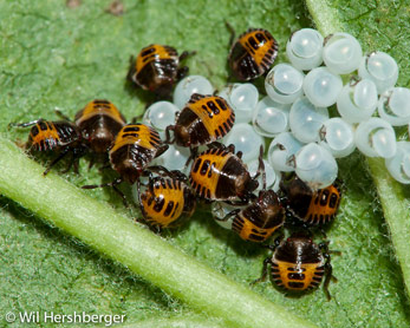

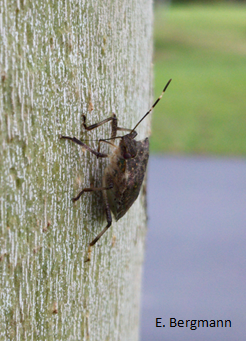
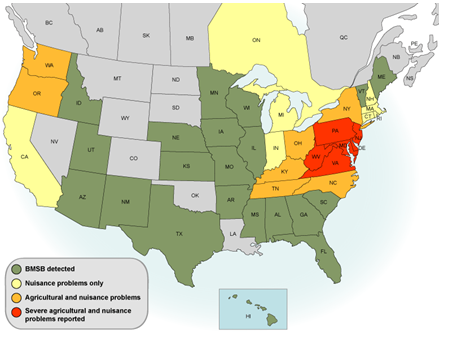
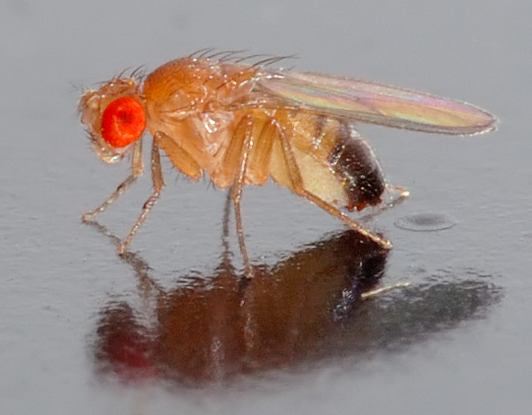

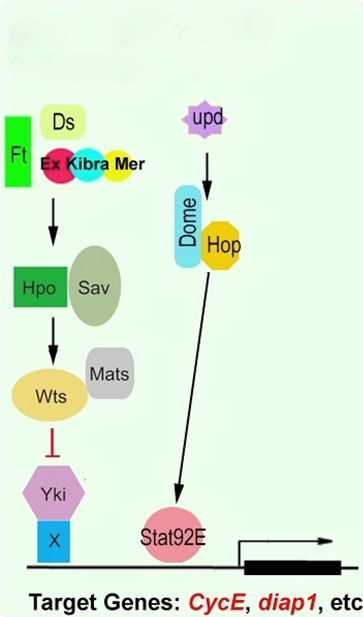
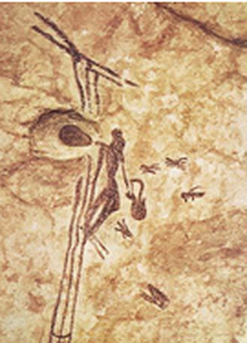
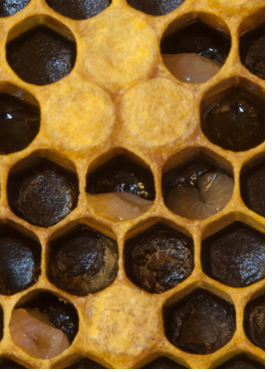
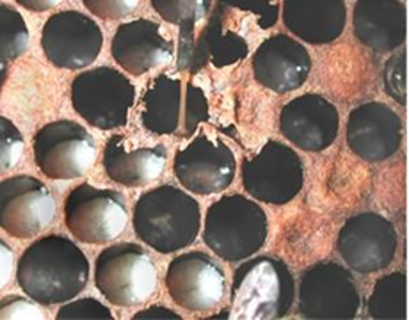
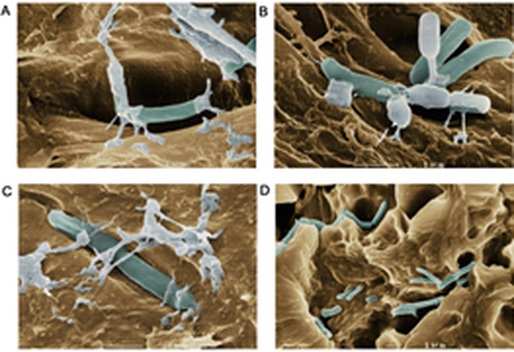
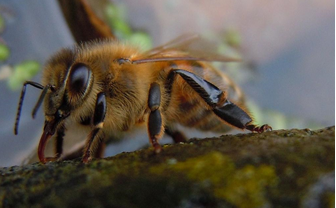
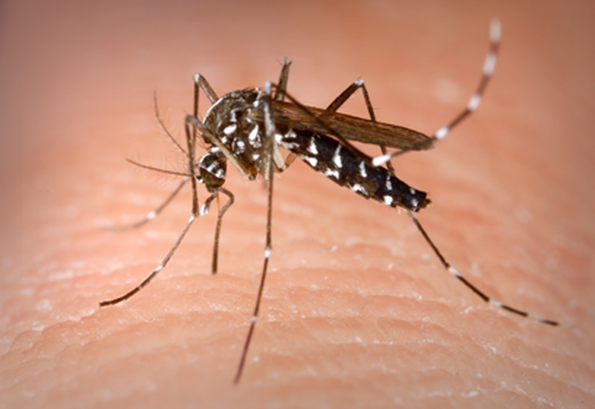

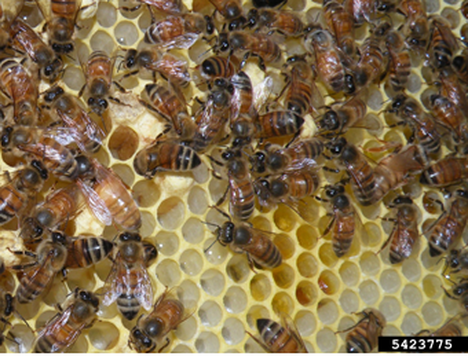
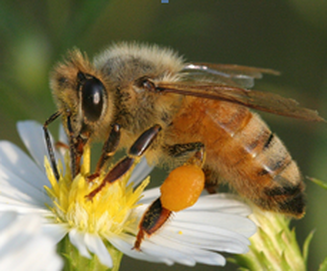
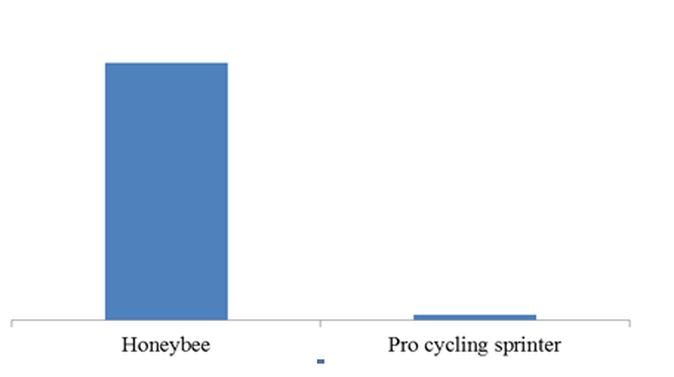
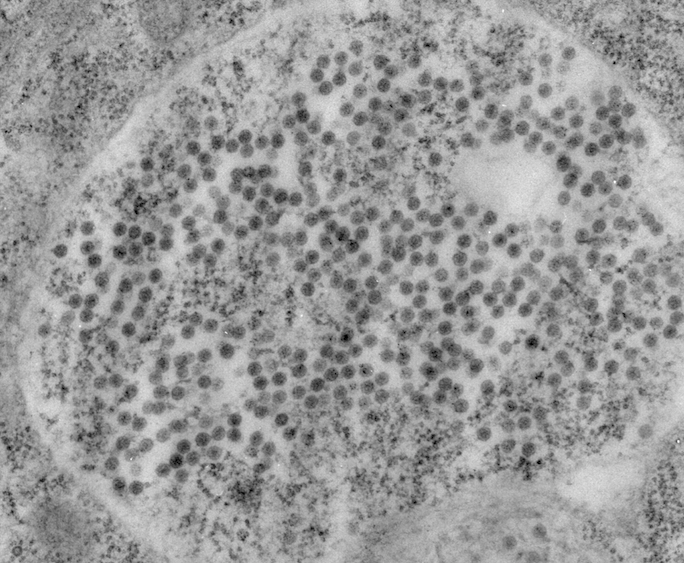
 RSS Feed
RSS Feed




